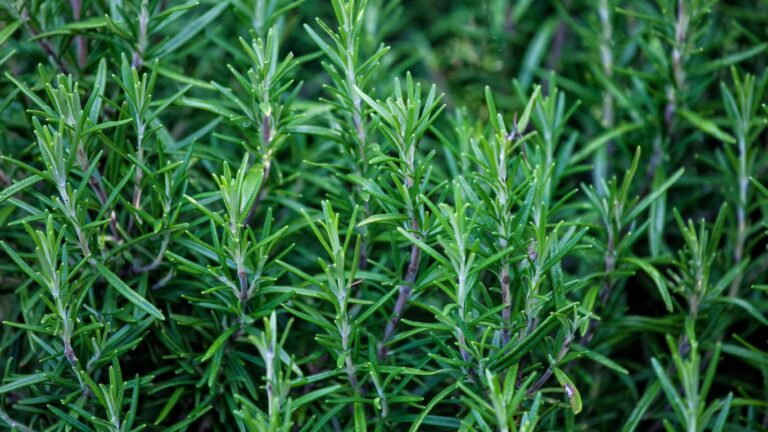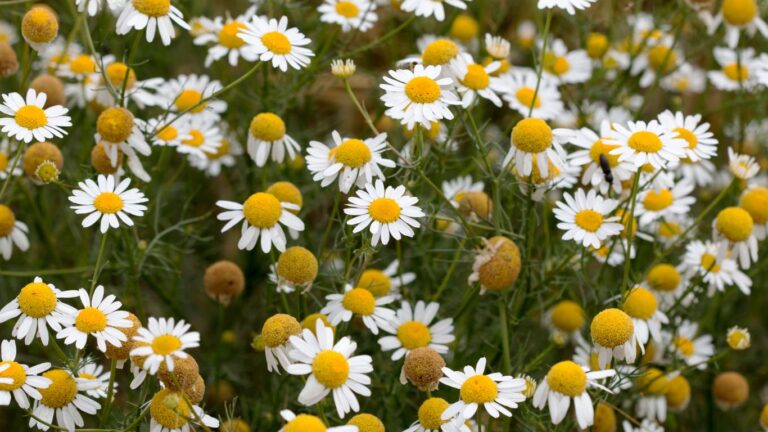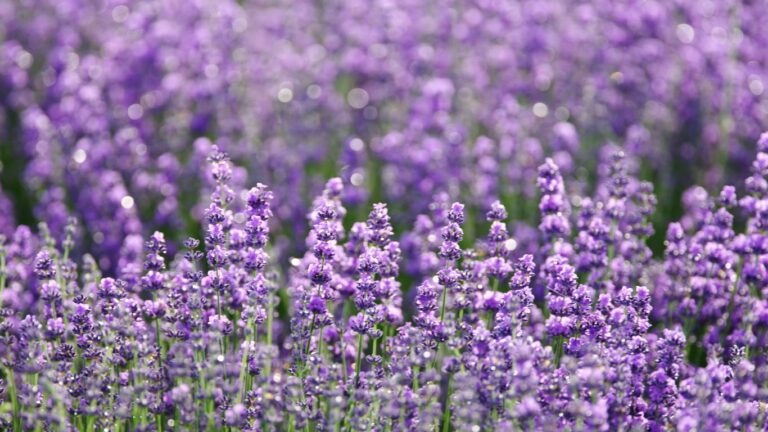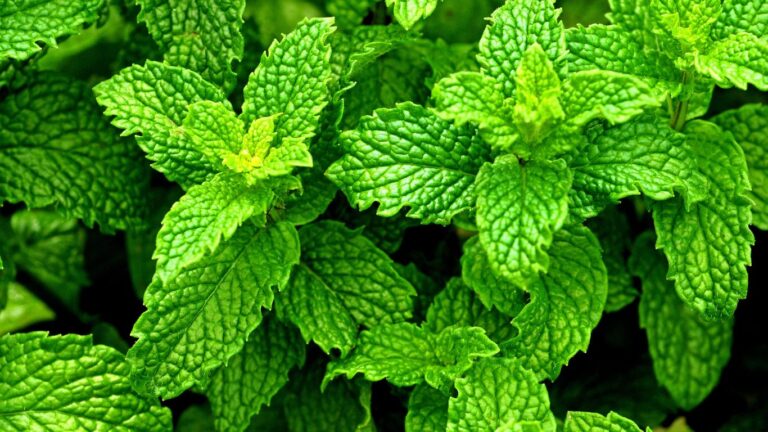In today’s world, where the focus on natural living and holistic wellness is gaining momentum, homegrown herbal remedies offer a treasure trove of healing potential. From soothing teas to aromatic infusions, these herbal wonders have been cherished for centuries for their diverse therapeutic properties. Let’s explore few homegrown herbal remedies that you can cultivate and harness for health and wellness
- Rosemary (Rosmarinus officinalis):
- Rosemary (Rosmarinus officinalis):
Rosemary is revered for its stimulating and invigorating properties. It can help improve concentration, memory and cognitive function. Rosemary-infused oil or tea can be used topically or internally to promote mental clarity and focus. Revered for its stimulating and invigorating properties, rosemary has been cherished for centuries for its myriad health benefits
Health Benefits of Rosemary
Rosemary is known to improve concentration, memory retention, and cognitive function. The aroma of rosemary has been shown to stimulate the brain, promoting mental clarity and alertness.
Rosemary is rich in antioxidants and compounds that aid digestion and soothe gastrointestinal discomfort. Consuming rosemary tea or incorporating it into meals can help alleviate bloating, gas, and indigestion.
Rosemary contains anti-inflammatory compounds that may help reduce inflammation in the body, making it beneficial for conditions like arthritis and muscle soreness.

How to Grow Rosemary at Home?
Rosemary is a hardy perennial herb that thrives in well-drained soil and full sunlight. It can be grown in containers or directly in the garden. Here’s how to grow rosemary at home:
- Choose a sunny location with well-drained soil.
- Plant rosemary seeds or seedlings in the spring after the last frost.
- Water the plant regularly, allowing the soil to dry out between waterings.
- Prune rosemary regularly to encourage bushy growth and prevent it from becoming leggy.
- Protect the plant from frost during the winter months.
How to Harvest Rosemary at home?
Harvesting rosemary is simple and can be done throughout the growing season. Follow these steps to harvest rosemary:
- Use sharp scissors or pruning shears to snip off sprigs of rosemary from the plant.
- Harvest young, tender stems for the best flavor and aroma.
- Avoid harvesting more than one-third of the plant at a time to ensure healthy growth.
- Use fresh rosemary immediately or store it in the refrigerator for later use.
How to Comsume Rosemary?
You can infuse rosemary leaves in olive oil to create a fragrant and versatile herbal oil. Rosemary-infused oil can be used topically to soothe sore muscles and joints or as a flavorful addition to culinary dishes.
You can have Rosemary in the tea form. Brew fresh or dried rosemary leaves in hot water to make a soothing and aromatic herbal tea. Rosemary tea can be enjoyed daily to promote mental clarity and digestive health.
rosemary is not just a culinary herb but also a potent homegrown remedy for enhancing cognitive function, supporting digestion, and reducing inflammation. By cultivating rosemary at home and harnessing its medicinal properties, individuals can enjoy the benefits of this versatile herb in various forms, from teas to infused oils, for improved health and well-being.
2. Chamomile (Matricaria chamomilla):
Chamomile is known for its gentle sedative effects and digestive benefits. It may help relieve insomnia, anxiety, and upset stomachs. You can grow chamomile in fertile, well-drained soil and full sunlight. Harvest the flowers when they are fully open and use them to make calming teas or infused oils.

Health Benefits of Chamomile
Promotes Better Sleep: Chamomile tea is renowned for its calming properties, making it an excellent natural remedy for insomnia and improving overall sleep quality. It contains apigenin, an antioxidant that binds to specific receptors in the brain, promoting relaxation and reducing insomnia symptoms.
Relieves Stress and Anxiety: Chamomile tea acts as a mild sedative, helping to soothe nerves and reduce feelings of stress and anxiety. Drinking chamomile tea regularly may promote relaxation, ease tension and improve overall mood.
Aids Digestive Health: Chamomile tea has been used for centuries to alleviate digestive issues such as bloating, gas, indigestion and stomach cramps. It helps relax muscles in the digestive tract, reducing spasms and promoting healthy digestion.
Reduces Inflammation: Chamomile tea contains anti-inflammatory properties that may help alleviate symptoms associated with inflammatory conditions such as arthritis, rheumatism, and inflammatory bowel diseases like ulcerative colitis and Crohn’s disease.
Boosts Immune Function: Chamomile tea is rich in antioxidants, including flavonoids, terpenoids, and polyphenols, which may help strengthen the immune system and protect the body against infections, viruses, and diseases.
Supports Skin Health: Chamomile tea has anti-inflammatory and antioxidant properties that may help soothe skin irritations, reduce redness, and promote healing.
Regulates Blood Sugar Levels: Some research suggests that chamomile tea may help regulate blood sugar levels and prevent spikes in insulin, making it beneficial for individuals with diabetes or those at risk of developing the condition.
Relieves Menstrual Discomfort: Chamomile tea has mild muscle-relaxing properties that may help alleviate menstrual cramps and discomfort associated with premenstrual syndrome (PMS). It may also help reduce anxiety and irritability often experienced during menstruation.
Improves Heart Health: Drinking chamomile tea may help lower blood pressure and reduce cholesterol levels, thus promoting heart health and reducing the risk of cardiovascular diseases such as heart attacks and strokes.
Supports Oral Health: Chamomile tea has antibacterial properties that may help prevent cavities, gum disease, and bad breath. Rinsing with chamomile tea or using it as a mouthwash can promote oral hygiene and overall dental health.
How to Grow Chamomile?
- Chamomile thrives in well-drained soil and full sun. Select a sunny spot in your garden or a container with ample sunlight exposure.
- Chamomile can be grown from seeds or seedlings. Sow seeds directly into the soil or start them indoors 6-8 weeks before the last frost. Transplant seedlings outdoors once the weather warms up.
- Space chamomile plants 6-12 inches apart to allow for adequate air circulation. Ensure the soil is well-drained and slightly acidic to neutral pH.
- Keep the soil consistently moist but not waterlogged. Water the plants at the base to prevent moisture-related issues. Chamomile plants are relatively low-maintenance but may benefit from occasional fertilization with a balanced fertilizer.
- Keep the area around chamomile plants free from weeds to prevent competition for nutrients and moisture. Monitor for pests like aphids and caterpillars, and treat them promptly with organic pest control methods if necessary.
How to Harvest Chamomile?
- Chamomile flowers are best harvested when they are fully open, typically in the morning after the dew has evaporated. Choose flowers that are vibrant and fully developed for optimal flavor and potency.
- Gently pluck the chamomile flowers from the stem using your fingers or scissors. Aim to harvest the entire flower head, including the petals and the center.
- Spread the harvested chamomile flowers in a single layer on a clean, dry surface, such as a mesh drying rack or a parchment-lined tray. Allow the flowers to air dry in a warm, well-ventilated area away from direct sunlight. Stir or flip the flowers occasionally to ensure even drying.
- Once the chamomile flowers are completely dry, store them in an airtight container away from heat, light, and moisture. Properly dried chamomile flowers can retain their potency and flavor for up to a year.
Chamomile is available in two main varieties: German chamomile (Matricaria chamomilla) and Roman chamomile (Chamaemelum nobile). Both varieties are used interchangeably for herbal remedies and teas.
- Chamomile is known for its calming and soothing properties, making it a popular ingredient in herbal teas, bath products, and skincare formulations.
- The flowers of chamomile plants resemble small daisies with white petals and yellow centers. They emit a sweet, apple-like fragrance when crushed.
- Chamomile tea is often consumed for its relaxing effects and is believed to aid in digestion, promote sleep, and reduce anxiety and stress.
Incorporating chamomile into your garden not only adds beauty but also provides a sustainable source of this versatile herb for your herbal remedies and wellness routines. With proper care and harvesting techniques, you can enjoy the benefits of homegrown chamomile throughout the year.
3. Lavender (Lavandula angustifolia):
Lavender is known for its calming and relaxing properties. It can help reduce stress, anxiety, and insomnia. Grow lavender in well-drained soil and full sunlight. Harvest the flowers when they are in full bloom and use them to make soothing teas, bath salts, or aromatherapy sachets.

Health Benefits of Lavender
Lavender, with its delicate purple blooms and enchanting aroma, is more than just a garden favorite—it’s a powerhouse of health benefits and natural remedies.
Promotes Relaxation: Lavender is known for its calming properties, making it a popular choice for aromatherapy and relaxation techniques. Inhaling lavender essential oil or sipping lavender tea may help reduce stress, anxiety, and promote better sleep quality.
Relieves Headaches: The soothing aroma of lavender has been shown to alleviate headaches and migraines when inhaled or applied topically. Massaging diluted lavender oil onto the temples and forehead may help ease tension and promote headache relief.
Supports Skin Health: Lavender possesses antibacterial and anti-inflammatory properties, making it beneficial for various skin conditions. It may help soothe irritations, reduce redness, and promote healing in minor cuts, burns, insect bites and acne.
Alleviates Respiratory Issues: Inhaling steam infused with lavender essential oil can help ease respiratory symptoms such as congestion, coughs, and sinusitis. Lavender’s antimicrobial properties may also help fight respiratory infections and promote clearer breathing.
Improves Mood and Mental Well-being: Lavender’s pleasant scent has mood-lifting effects and can help uplift spirits, reduce agitation, and improve overall mental well-being. Incorporating lavender into your daily routine may help create a sense of calm and positivity.
How to Grow Lavender
Choose the Right Location: Lavender thrives in well-drained soil and full sunlight. Select a sunny spot in your garden or container where lavender can receive at least 6-8 hours of direct sunlight per day.
Planting Lavender: Lavender can be grown from seeds, cuttings, or nursery-bought plants. Plant lavender in spring or fall, spacing them 12-18 inches apart to allow for air circulation.
Soil and Watering: Lavender prefers sandy or loamy soil with excellent drainage. Avoid overwatering, as lavender is drought-tolerant and susceptible to root rot in soggy conditions. Water deeply but infrequently, allowing the soil to dry out between waterings.
Pruning and Maintenance: Prune lavender plants regularly to encourage bushy growth and prevent woody stems. Trim back spent flower stems to promote continuous blooming and maintain the plant’s shape.
How to Harvest Lavender
Timing: Harvest lavender flowers when they are in full bloom but before they begin to fade. The optimal time for harvesting is typically in the morning after the dew has dried but before the sun becomes too hot.
Harvesting Method: Gently snip lavender flower stems just above the leaves using sharp pruning shears or scissors. Aim to harvest the flowers with long stems, as they can be used in floral arrangements, crafts, or culinary purposes.
Drying Lavender: Bundle harvested lavender stems together and hang them upside down in a warm, well-ventilated area away from direct sunlight. Allow the lavender to air dry for 1-2 weeks until the flowers are crisp and brittle.
Storage: Once dried, remove the lavender flowers from the stems and store them in airtight containers away from light, heat, and moisture. Dried lavender can retain its fragrance and potency for several months.
Lavender comes in various cultivars and hybrids, each with its unique scent, color, and growth habit. Popular varieties include English lavender (Lavandula angustifolia), French lavender (Lavandula stoechas), and Spanish lavender (Lavandula dentata).
Lavender essential oil is extracted from the flowers through steam distillation and is widely used in aromatherapy, perfumery, and natural remedies.
Lavender attracts pollinators such as bees and butterflies to the garden, making it a beneficial plant for promoting biodiversity and supporting local ecosystems.
Lavender flowers are edible and can be used to infuse flavor into culinary creations such as baked goods, desserts, teas, and cocktails.
Incorporating lavender into your garden not only adds beauty and fragrance but also offers a multitude of health benefits and practical uses. With proper care, cultivation, and harvesting techniques, you can enjoy the therapeutic and aromatic qualities of lavender year-round.
4. Peppermint (Mentha x piperita):
Peppermint is known for its refreshing aroma and digestive properties. It can help relieve nausea, indigestion, and headaches. Grow peppermint in moist, well-drained soil and partial sunlight. Harvest the leaves regularly and use them fresh or dried to make invigorating teas or infused water.

Health Benefits of Peppermint
Peppermint, with its invigorating aroma and cooling taste, is not just a delightful culinary herb but also a powerhouse of health benefits. Let’s delve into the various aspects of peppermint, including its health benefits, how to grow it, how to harvest it, and other pertinent details:
Health Benefits of Peppermint:
Peppermint is well-known for its ability to soothe digestive discomfort and alleviate symptoms such as indigestion, bloating, gas, and stomach cramps. It may also help relax the muscles of the digestive tract, promoting smoother digestion.
Peppermint has anti-nausea properties and may help reduce feelings of nausea and motion sickness. Sipping on peppermint tea or inhaling the aroma of peppermint oil may provide relief from queasiness.
Peppermint contains menthol, which has analgesic and muscle-relaxing properties. Applying diluted peppermint oil to the temples or inhaling its aroma may help alleviate tension headaches and migraines.
Peppermint acts as a natural decongestant and expectorant, helping to clear nasal passages and relieve symptoms of respiratory conditions such as colds, coughs, and sinus congestion.
The invigorating aroma of peppermint has been shown to enhance mental alertness, concentration, and cognitive function. It may help combat mental fatigue and boost overall mental clarity.
How to Grow Peppermint
Peppermint thrives in partial to full sunlight and well-drained soil. Choose a location in your garden that receives adequate sunlight and has good drainage.
Peppermint can be propagated from seeds, but it’s easiest to grow from cuttings or by purchasing young plants from a nursery. Plant peppermint in the spring after the last frost, spacing each plant about 18-24 inches apart.
Peppermint requires regular watering to keep the soil evenly moist. Avoid overwatering, as peppermint prefers slightly dry conditions. Mulch around the plants to help retain moisture and suppress weed growth.
Peppermint has a vigorous growth habit and can quickly spread via underground runners. To prevent it from taking over your garden, consider planting peppermint in containers or using barriers to contain its spread.
How to Harvest Peppermint
Peppermint leaves can be harvested once the plants have reached a height of 8-12 inches and are well-established. Avoid harvesting more than one-third of the plant at a time to allow for continued growth.
Using sharp scissors or pruning shears, snip off the upper portion of the stems, including the leaves. Harvesting the top portion of the plant encourages bushier growth and ensures a continuous supply of fresh leaves.
To preserve peppermint for later use, you can air dry the harvested leaves. Bundle the stems together and hang them upside down in a dry, well-ventilated area away from direct sunlight. Once dry, remove the leaves from the stems and store them in an airtight container.
Peppermint is a hybrid plant, a cross between spearmint (Mentha spicata) and watermint (Mentha aquatica).
Peppermint oil, extracted from the leaves and stems of the peppermint plant, is widely used in aromatherapy, culinary applications, and natural remedies.
Peppermint tea is a popular herbal infusion enjoyed for its refreshing flavor and numerous health benefits. It can be brewed using fresh or dried peppermint leaves.
